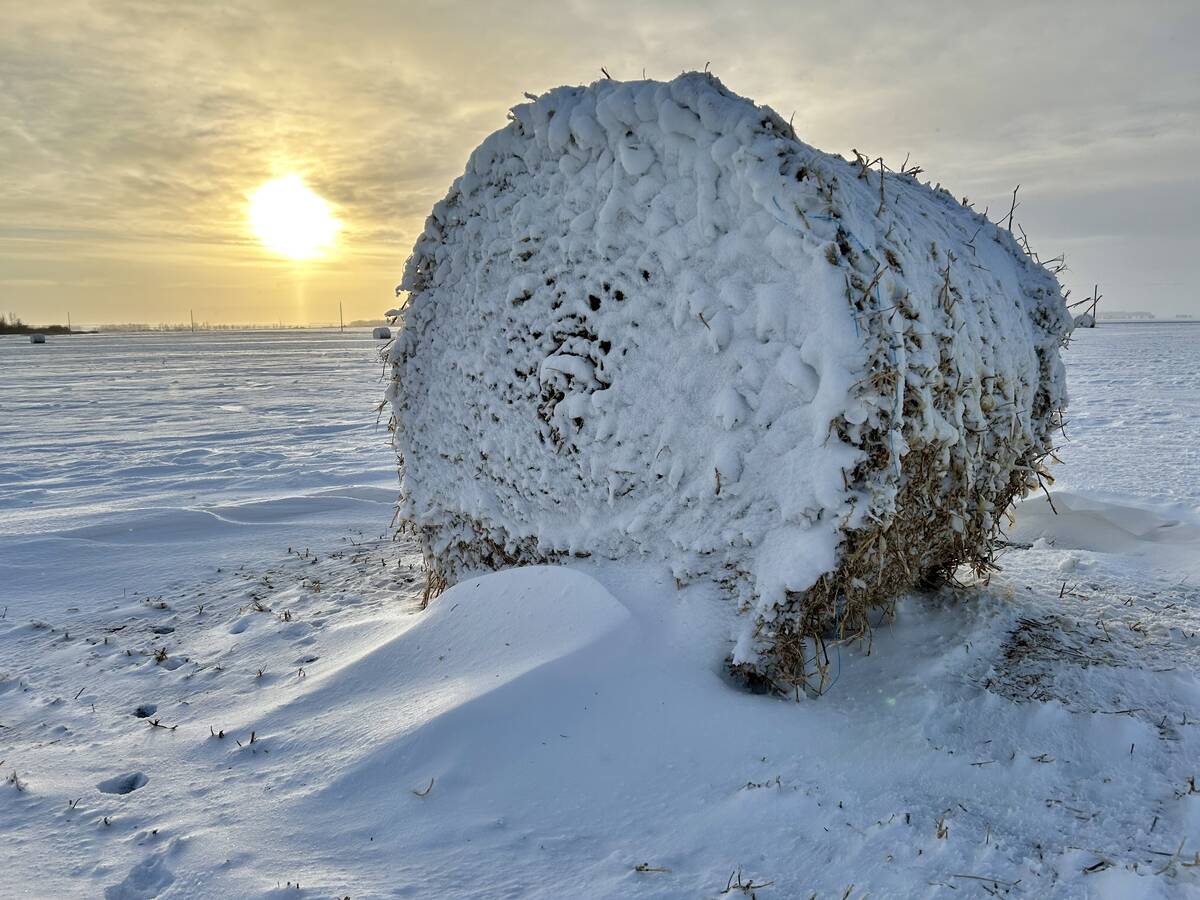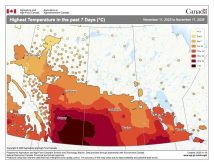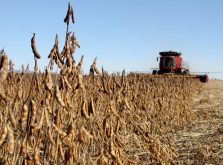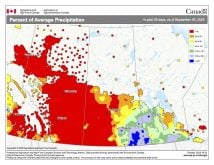Let’s do a quick recap of July weather. Alberta was spared the impacts of the large Hudson Bay upper low, with continued above average temperatures experienced in June.
Edmonton was the hot spot with a mean monthly temperature of 18.6 C, which was about 2.5 C above average. Calgary came in second with a temperature of 18.2 C, about 1.7 C warmer than average. The Peace River region was not far behind with a mean monthly temperature of 17.6 C, about 1.3 C warmer than average.
Read Also

Prairie winter snowfall forecast 2025-2026
How much snow should farmers in Alberta and elsewhere on the Canadian Prairies expect for the rest of December 2025 and into January-February 2026?
The area from Edmonton northward saw near to above average rainfall in July. Both Edmonton and Peace River reported around 90 millimetres of rain, which was near average for Edmonton and about 20 mm above average for Peace River.
The southern half of the province was drier, with some regions seeing near average rainfall while other were a little below average. Calgary reported around 40 mm of rain, which was about 20 mm below average.
As for the latest outlooks for September, the Old Farmer’s Almanac predicts average temperatures along with above average rainfall. The Canadian Farmers’ Almanac calls for near to below average temperatures as it mentions “chilly” weather near the end of the month. Its precipitation forecast also calls for above average amounts.
NOAA calls for near to above average temperatures with near average precipitation. The CFS model forecasts near average temperatures and above average precipitation. The CanSIP’s forecast is for above average temperatures and precipitation.
Last on the list of weather models is the ECMWF or European model, and its forecast is for September to be near average for both temperature and precipitation.
Patterns of wreckage
Now let’s discuss straight line winds. While most of us know tornadoes can produce the most powerful winds on earth and can be truly awe inspiring, not many of us will experience one. But I can pretty much guarantee that, if you live on the Prairies, you will experience a thunderstorm that produces very strong straight-line winds. Sometimes these winds can be so strong and devastating that their damage is attributed to a tornado, and the only way to determine cause is to look at the pattern of damage.
With tornadoes, the damage will be more random, with trees and objects broken and thrown in different directions due to the swirling air. With straight line winds, nearly all damage is in one direction.
Nearly all straight-line winds, or at least the really damaging ones, occur near the leading edge of a thunderstorm. Thunderstorms are made up of updrafts and downdrafts. Air moves upward due to either being warmer than the air around it or by being forced upward as horizontally moving air is deflected by something like a cold front. Downdrafts are a little more difficult to understand.
When a thunderstorm is moving in, we often get that first big blast of wind that causes everyone to run for shelter and announces the arrival of the storm. There are two main reasons for these winds.
First, all the air rising to the top of the storm has to go somewhere. In a strong storm, an overhead jet stream vents away this air but often not all of it is vented. Eventually the built up air becomes big enough, or the updraft weakens, and that air falls toward the ground.
Combine this falling air with the rain that is also falling. As the rain falls, it pushes on the air around it, much like a big waterfall. This downward moving air hits the ground and then has to flow somewhere.
The area of falling rain acts like a wall, preventing much of the falling air from flowing back into the storm, so instead, this air is funneled or pushed in front of the storm. These downbursts can be short-lived or they can continue for long distances as the thunderstorm travels.
Long-lived events are known as derechos, though they are not common in Canada. Peak wind speeds in these downbursts can routinely hit over 100 km/h with gusts at over 200 km/h.
The worst derecho on record in Canada occurred last May in southern Ontario and Quebec. Winds speeds were recorded as high as 190 km/h along a path that extended for nearly 1,000 km and took nearly nine hours to play out.
Damages exceeded $750 million, making it the sixth most costly weather disaster on record. Sadly, 12 people were killed, mostly from falling trees.
In front of a thunderstorm is not the only place were strong straight-line winds can occur. Often, we can get very strong winds in the middle of the storm. One reason is the jet stream or strong upper-level winds.
Strong thunderstorms often need strong upper-level winds to help vent the rising air. Occasionally, these winds get caught in a strong downdraft and are deflected toward the surface. If they make it all the way to the surface, they spread out and flow in several directions depending on the angle.
This type of straight-line wind can be confused with a tornado because they often seem more chaotic than winds that precede a thunderstorm.
















